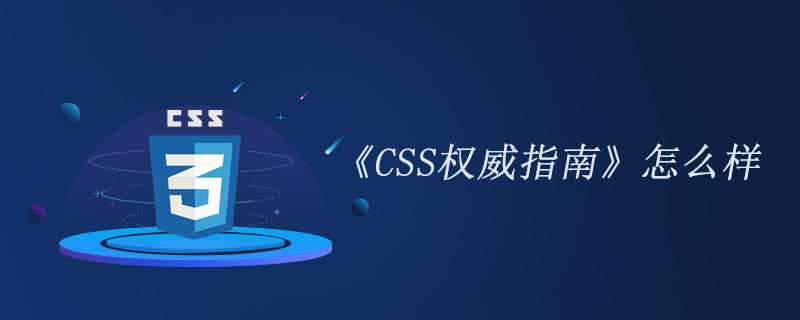
"CSS Definitive Guide" is a book published by China Electric Power Press in October 2007. The author is Eric A. Meyer.
Through many examples, this book explains in detail how to create or modify the appearance of the entire website by just creating a style sheet in one place, and how to obtain richer performance effects that HTML cannot. It also shows how to apply all aspects of cascading style sheets into practice following the latest CSS specifications (css2 and css2.1).

About the author
Eric A. Meyer is the most renowned world-class HTML and CSS expert, a member of the W3C CSS&FP working group, and the leader of the W3C CSS test suite. He has more than 10 years of experience in web development and design. His complex spiral design (see Chapter 12 of this book) was inducted into the W3C CSS Hall of Fame. He is a very active technical writer. In addition to this book and its companion volumes, he also authored "The Definitive Guide to CSS" and a series of famous online tutorials. (Recommended learning: CSS video tutorial.)
Editor recommendation
Do you want to make the Web style uniform quickly and effortlessly? "The Definitive Guide to CSS" (3rd Edition) tells you how to apply the latest CSS2 to actual work with various CSS elements defined in CSS2.1. Through the examples in the book, you will learn how to use CSS to create or modify the appearance of the website, and achieve effects that cannot be achieved with ordinary HTML.
If you are a web designer or application developer interested in complex page styles, improving accessibility, and saving time and energy, you must not miss this book. This revised edition provides a comprehensive explanation of how CSS is implemented and provides an in-depth analysis of the latest CSS specifications.
CSS is an evolving language used to describe the appearance of web content on screens, printers, speech synthesizers, screen readers, and chat windows. Every IoT device with a browser, regardless of screen size, uses CSS, including phones, computers, video games, TVs, watches, kiosks, and car consoles. Authors Eric Meyer and Estelle Weyl show you how to use layout, transitions and animations, borders, backgrounds, text properties, and many other tools and techniques to improve the user experience, speed development, avoid potential errors, and Enhance your application.
The book was written in the prehistoric period when CSS2.1 was just released. Mostly about the basics of css. There are many explanations in the book about deprecated browser tags (,
The explanation is very detailed. Personally, I feel that the most valuable content is the explanation of the frame model, floating, positioning, table length and width calculation, etc., which is worth reading and studying again and again. In this regard, when writing code, we often only have a perceptual understanding, but cannot know why. The book separates the "algorithm" of positioning and tells us how the browser determines in the first step, how to calculate in the second step, and what result it gets in the end when facing these situations. For a certain model, what are the general principles, what are the special situations, and what errors and magical effects may occur if you set it up like this.
I have come into contact with it sporadically when reading blogs online. Some authors (such as Zhang Xinxu) actually explain it well, but the writing style is too difficult to accept. It is not as good as this book, 1234, priorities, simplicity and reality.
Frankly speaking, this part of knowledge should be mastered by a qualified front-end, but because I usually "can write it even if I try to write it", I have never understood its principles in depth. A very typical scenario is: "Ah, this span is not vertically aligned! What should I do? Oh, try adjusting line-height, no, it's not even close. Then try adjusting verticle-align again and give a negative value to offset it. One click, ha, that’s it!” Now that it’s done, who cares what’s going on inside? I think the above programmers (or css code testers) (represented by me) really need to reflect on it.
The above is the detailed content of How about 'The Definitive Guide to CSS'. For more information, please follow other related articles on the PHP Chinese website!